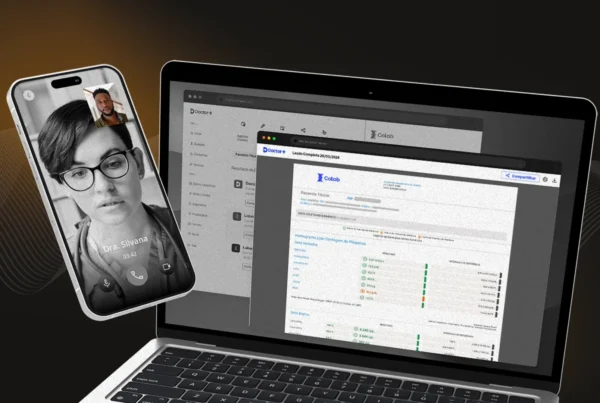In projects of any nature, little or nothing is created. This means the following: what has already worked in the past needs to be documented and passed on to the team, as this helps standardize and save time in more complex activities. This is the Design System background.
Throughout this text, we will explain more about the Design System, highlighting why it is so important and beneficial. In addition, we will talk about its principles and elements, presenting a successful case. Continue reading to the end to find out more!
What is Design System?
Perhaps the word that best defines the Design System is reuse. In practice, the term means a set of components that have already been used in past projects, aiming to standardize a specific application and, to some degree, automate the business. Therefore, the idea of the Design System is to unify the language of a product, facilitating the team’s work and promoting the highest quality of this product, when it is finished.
That said, the Design System is, in reality, a business asset that serves as a reference for projects in the company. Software, for example, can be made according to the elements and principles of the Design System, being something that must undergo constant updating.
Therefore, the Design System is not something set in stone, which requires the frequent collaboration of those working on projects of the most varied types. In summary, as mentioned at the beginning, some things do not need to be created from absolute zero — the Design System is an effective means for teams to have a starting point when building solutions for customers, also focusing on innovation.
Difference between Design System, Style Guide, and Pattern Library
The Design System is a larger concept than the other two, but it encompasses both. Therefore, both the Style Guide and the Pattern Library are more specific components of the Design System, helping collaborators to be more agile and productive throughout a project.
What’s your goal?
If the project is for a website or software, for example, both the team and the client expect a quality product in the shortest possible time. Bearing this in mind, when already documented patterns are reused, this practice tends to be perpetuated in the company, facilitating innovation and adaptation by new employees.
A plausible analogy made with the Design System is the famous Lego game. This is composed of several pieces, and these are fitted together to assemble different things, whether concrete or abstract forms. The lesson that can be drawn from this analogy is this: to design something, it is not necessary to create components in such a granular way. Such components — the Lego pieces — already exist, and the team just needs to adapt to the requirements and, mainly, to the needs of the customers.
What are the benefits?
Based on what has been said so far, it may be possible to infer some benefits of the Design System. One of them, which is on the client side, is the clarity and usability of the application. These two aspects weigh heavily in the decision whether the customer will look for your company again to close a new contract. A lean interface, easy to understand, navigate and handle (also considering mobile devices) are things that are obtained with the help of the Design System.
Scalability
Another benefit you get with the Design System is software scalability. One of the things that enhances this is the microservices architecture, responsible for reducing the coupling and dependence between software functionalities. Consequently, this also facilitates code maintenance and increases its power to integrate with other tools.
Reliability and speed
One strength of microservices is that they are often more reliable and faster than monolithic systems. These are characterized by unique code, tightly coupled, and difficult to maintain. This also enables better performance in the cloud, which is the ideal environment for modern applications to host and run.
Security and privacy
Two other important benefits of the Design System are security and privacy. Both are provided by so-called proxy servers, which act as a channel between the user and the internet. In practice, it acts by accelerating the loading of web pages, as it has data stored in its cache memory.
What are the principles and elements of the Design System?
Earlier, we mentioned two of the Design System principles: microservices and the proxy server. There is another called horizontal and vertical scale, which consists, respectively, of increasing the amount of hardware equipment and expanding their computational power. Depending on the scenario, one or the other better meets the customer’s demands.
PAC theorem and AB InBev´s successful case
The idea behind the PAC Theorem is this: a distributed system can provide two of the three properties simultaneously — in this case, consistency, availability, and tolerance to a partition. In other words, what happens is the tradeoff between consistency and availability when there is a partition.
Some other important Design System principles are:
- storage;
- message queues;
- file systems.
AB InBev had the challenge of improving its logistics processes. The company did not work with a centralized data repository, so the phenomenon called silo occurred, an excess of information that was confined to a specific sector of the company.
Through the partnership with AB InBev, BRQ implemented a strategy called discovery, intending to discover what the company most needed at that moment. This was precisely the context in which the Design System was built, to create a dashboard that could integrate the company’s data. With this implementation, Ambev achieved important results, such as the integration of logistical processes and agility in decision-making, in addition to greater proactivity in solving problems.
The Design System, as seen, helps professionals throughout the development of applications, through the standardization and reuse of components. BRQ helps companies grow digitally, through solutions such as EXA and Mobile, providing all the support our customers need to be increasingly modern and efficient. Read other blog content, subscribe to our Newsletter, and get to know BRQ’s services and solutions!





